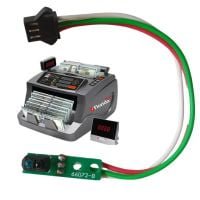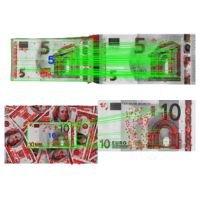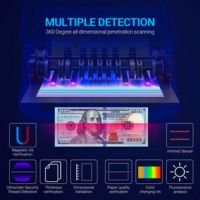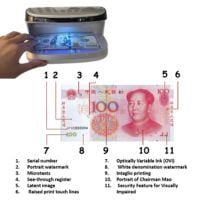Counting machines are indispensable tools in various financial institutions, retail businesses, and even households for efficiently managing cash. These machines not only tally money but also play a critical role in identifying counterfeit currency. Understanding the intricate process by which counting machines detect fake money is essential in ensuring the security and reliability of monetary transactions. This article aims to delve into the mechanisms behind these machines, shedding light on their ability to discern counterfeit bills accurately.
Optical Sensors and Image Processing:
Counting machines employ advanced optical sensors and image processing techniques as their primary means to detect counterfeit currency. These sensors capture detailed images of the bills passing through the machine. High-resolution cameras within the device take multiple images of various parts of the currency, including intricate details like watermarks, security threads, and micro-printing.
Optical Sensors

There are two main types of optical sensors used in cash counting machines:
- Reflective sensors: These sensors emit a beam of light that bounces off the surface of the bill or coin. The sensor then measures the intensity of the reflected light to determine the denomination of the currency.
- Transmissive sensors: These sensors shine a beam of light through the bill or coin. The sensor then measures the amount of light that is absorbed by the currency to determine the denomination.
Each type of sensor has its own advantages and disadvantages. Reflective sensors are typically less expensive and more reliable, but they can be fooled by counterfeit bills or bills that are in poor condition. Transmissive sensors are more accurate, but they can be more expensive and more susceptible to dust and dirt.
Image Processing

Once the optical sensors have captured the image of the bill or coin, the image processing software goes to work. The software analyzes the image to determine the following:
- Denomination: The software compares the size, color, and other features of the bill or coin to a database of known denominations.
- Orientation: The software determines whether the bill or coin is facing the right way.
- Condition: The software checks for tears, rips, and other signs of damage that could render the bill or coin unfit for circulation.
UV and IR Detection:

In addition to optical sensors, counting machines incorporate ultraviolet (UV) and infrared (IR) detection capabilities. Legitimate currency often includes special UV- and IR-reactive elements that emit distinct responses when exposed to UV or IR light. Counterfeit bills may lack or possess altered versions of these features, allowing the machine to flag them as suspicious.
Magnetic Ink Detection:

Many currencies around the world use magnetic ink in specific areas of the bills, such as the serial numbers. Counting machines equipped with magnetic sensors can identify the presence of magnetic ink. Discrepancies in the magnetic properties compared to genuine currency can signal the likelihood of counterfeiting.
Size, Thickness, and Weight Analysis:
Counterfeit bills often differ slightly in size, thickness, or weight from authentic currency due to the materials and printing processes used. Counting machines are programmed to measure these physical characteristics precisely. Deviations outside predefined tolerances prompt the machine to identify the bill as potentially counterfeit.
Microprint and Watermark Verification:

Authentic banknotes feature intricate microprint and watermarks that are challenging to replicate accurately. Counting machines equipped with high-resolution scanners verify the presence and authenticity of these elements. Any inconsistencies or absence of these security features can trigger an alert regarding the bill’s legitimacy.
Machine Learning Algorithms:

Modern counting machines utilize machine learning algorithms to continuously improve their counterfeit detection capabilities. These algorithms analyze vast datasets of authentic and counterfeit bills, learning and adapting to new counterfeit methods. This adaptive learning enhances the machine’s accuracy in identifying increasingly sophisticated counterfeit currencies.
Error Recognition and Notification:
When a counting machine detects a suspicious bill, it stops the counting process and alerts the operator. Depending on the device’s sophistication, it may display an error code, halt operations, or segregate the potentially counterfeit bill for manual inspection.
Counting machines serve as vital tools in cash management, not only efficiently tallying currency but also acting as a frontline defense against counterfeit money. Through a combination of optical sensors, UV/IR detection, magnetic ink analysis, and machine learning algorithms, these devices accurately identify counterfeit currency, safeguarding financial institutions, businesses, and consumers from monetary fraud. As counterfeiters continually evolve their methods, ongoing advancements in technology and counterfeit detection mechanisms will remain essential in maintaining the integrity of monetary transactions worldwide.
In conclusion, the intricate processes and advanced technologies employed by counting machines showcase their indispensable role in not just counting money but also safeguarding against counterfeit currency, ensuring the reliability and security of financial transactions in various sectors.

